Lab Notes
Short stories and links shared by the scientists in our community
Worried about coronavirus? Try shaving
The CDC cautioned that certain facial hairstyles may interfere with respirators, though there's debate over the efficacy of masks
The Centers for Disease Control and Prevention (CDC) has released an infographic depicting the compatibility of various facial hairstyles with filtering respirators. This is important because respirators function best with an airtight seal. A walrus mustache and soul patch both made the cut, while other styles were less lucky, including the Dalí and mutton chops.
The infographic has been circulating on Twitter just a day after the CDC briefed reporters on efforts to contain the spread of SARS-CoV-2, the novel coronavirus causing the ongoing disease outbreak of COVID-19. At the conference, CDC officials said they expected community spread of the virus in the United States, meaning sustained person-to-person transmission within the U.S.

Luckily, we now know what to do if we have a French Fork...or do we? See, there's some debate over who should be wearing masks and what kinds of masks they should be wearing.
A surgical mask or simple cloth mask may provide some protection, but they can also do more harm than good if they're reworn or improperly cleaned. In contrast, what the CDC infographic is talking about are respirators, which fit tightly around the nose and mouth to create that all-important airtight seal. As many ways as there are to wear any kind of mask correctly, there are far more ways to wear them incorrectly — taking them off intermittently, or touching the front when you remove them can both lead to contamination.
But who even should be wearing masks? If you're reading this from the U.S. or another country where the risk of catching SARS-CoV-2 right now is low, the answer is not you. Stockpiling masks may contribute unnecessarily to shortages, which are most harmful for the health workers and ill people who are advised to wear masks. The price of both surgical masks and respirators has shot up on Amazon in recent weeks, increasing worries about shortages and possible price gouging.
As a bonus, we at Massive have decided to model facial hairstyles that would pass and fail the CDC's infographic, respectively.

Co-founder Allan has a painter's brush mustache, which would not interfere with a respirator's seal.

New AE Max, on the other hand, has more of a long stubble look going on. He would not pass the airtight seal test.
Heat waves may drive bees to extinction
Climate change isn't all bad news for our striped friends, but the negative effects of heatwaves will outweigh the possible positive effects of warming in cooler regions
Charles J Sharp on Wikimedia Commons
A swath of recent research has shown that as climate is changing, some species and ecosystems are struggling to adapt. It's why some have said that we're in the midst of the "sixth mass extinction." Although they're small, bees have an outsize impact on the health of their ecosystems — and our collective livelihood. And some bee species are at risk of extinction.
Bumblebees are pollinators, insects essential for the well-being of both natural and human-made ecosystems. From a rolling wildflower meadow to acres of corn, bees are the diligent workers keeping things afloat. Without a healthy bee population, the natural spread of flora would be diminished and farmers would have to turn to costly alternative methods. The idea of crops pollinated by tiny robotic bee-drones has even been explored.
In February, an article in Science by Soroye et al. linked the risk of extinction for bees in North America and Europe to climate change. Heat waves — extended periods of elevated temperatures — pose risks to bumblebees who evolved in cooler climates. In areas where heat waves become more common, the risk of local extinction increases. Bumblebee populations have been monitored for years, and it's already apparent that across species, their populations are declining (almost 50% in North American over the past century!).
It's not all bad: where climate change will cause temperatures to be more comfortable for the bees, bees might expand their ranges. However, Soroye et al. found that the negative effects of heat waves are predicted to outweigh the positive effects of shifting regional climate. To save the bees, climate change mitigation is imperative — and it wouldn't hurt to plant a bumblebee garden this spring, either.
Horses lose four of their toes in the womb
About four weeks after conception, horse embryos still have five toes, just like humans
By Kevin Delvecchio on Unsplash
Horses only have one toe. Okay, they have one toe per leg, so four in total. Their hooves are equivalent to the top phalanx of our middle fingers. However, the ancestors of horses had more toes on each leg, three or four. During the evolution of the horse, the middle toe grew larger and larger in size, eventually forming what we now call a hoof. And now, all that's left of the other toes are two little stumps to the side of the hooves, called metapodials.
A new study led by Kathryn Kavanagh from the University of Massachusetts Dartmouth and her colleagues has now shown that horses do not always have one toe.
About four weeks after conception, horse embryos still have five toes, just like humans. In the weeks following, the middle toe will grow larger, while the outer pairs of toes first merge and then reduce to form the metapodials. By the time the embryo is two months old, only the middle toe will be left.

Horses have only four toes in total.
In reviewing the literature, the researchers found that the horses are not unique in this. All animals that they included in their review, ranging from pigs to crocodiles to emus, started off their life with either four or five digits. Many ended up with fewer digits, either through fusion, because some digits stopped growing, or through another mechanism.
Previously scientists thought that genetic factors would determine how many digits an animal should start growing as an embryo, and animals with fewer toes would grow fewer as an embryo. However, this new study proposes that all animals actually start off by growing four or five digits, and only later during the development do they reduce the number of digits.
How radar can track fireworks, according to a meteorologist
It is the same technique that they use to look for tornado debris while monitoring severe weather
National Weather Service, Kansas City
For many, the Super Bowl came and went. But for the multitude who witnessed their team win its first championship in over 50 years, the celebrations all around Kansas City could be detected by radar.
A tweet from the National Weather Service of Kansas City, which quickly went viral with over 3.2k retweets, shows Kansas City roaring in celebration after the win of their beloved Chiefs.
I talked with Andy Bailey, Warning Coordination Meteorologist for NWS Kansas City/Pleasant Hill, who explained the system.
Radar "works by transmitting a very short pulse of high power, microwave energy. After this transmission, it goes into a listening mode, waiting for the energy to go out, hit something, and be returned to the radar."
"While the pulses transmitted are several hundred thousand watts the amount returned to the radar is much smaller, just a fraction of one watt."
So what did the radar actually pick up? Bailey said the radar picked up "an increase in returned energy to the radar immediately after the Chief's victory."
Because of the type of radar used (called a dual-pol radar), the National Weather Service was also able to pick up shapes: "We can't see individual things like a single bird, plane, or raindrop, but we can see the predominant type of particles in a given volume of the atmosphere."
"Using this dual-pol technology, we could tell it wasn't precipitation, or biological (birds). The only other logical thing it could have been was fireworks debris given that no matter where in the city you were at the conclusion of the game, you were within earshot of exploding fireworks."
While radar works by sending out short bursts of electromagnetic waves which then reflect back to the radar when it hits particles in the atmosphere, this specialized dual-pol radar is much more accurate because it creates a two-dimensional picture - both horizontal and vertical.
According to Bailey, this is the same tech that helps save lives: "Incidentally, this is the same technique we use to look for tornadic debris during severe weather episodes."
After the EF4 tornadoes that hit the Kansas City area last year, the public's trust in the National Weather Service saved lives, "our social media messages were seen around 5 million times on facebook and twitter during and immediately after that tornado event. Most importantly, people heeded our warnings and nobody was killed"
So while you were celebrating (or still celebrating, we don't judge!), the National Weather Service is keeping you safe. In fact, for meteorologist Andy Bailey, the whole purpose of sharing the tweet boils down to trust: "In our business, trust saves lives. So when the entire city is electric and celebrating a Chiefs Super Bowl victory, and we can sense that on radar, we're going to communicate that."
Remembering Katherine Johnson. A space scientist's life in pictures
A critical scientist for the space program, passed away today at 101
NASA
Katherine Johnson passed away today at the age of 101. She was one of the critical mathematicians that correctly plotted the course to launch astronauts into orbit and the Apollo missions to the Moon.
As a way of remembrance, a short life-in-pictures for Katherine Johnson:

Katherine Johnson working at NASA Langley, 1962.
NASA

Launch of the Mercury-Redstone 3 (MR-3) rocket for the Freedom 7 mission, the US's first crewed spaceflight, 1961. Johnson did the trajectory analysis that launched Alan Shephard into space.
NASA

A meeting of the Equal Employment Opportunity Committee, 1965. Johnson seated at left.
NASA

Portrait of Johnson, 1971.
NASA

Johnson working at NASA Langley, 1980.
NASA
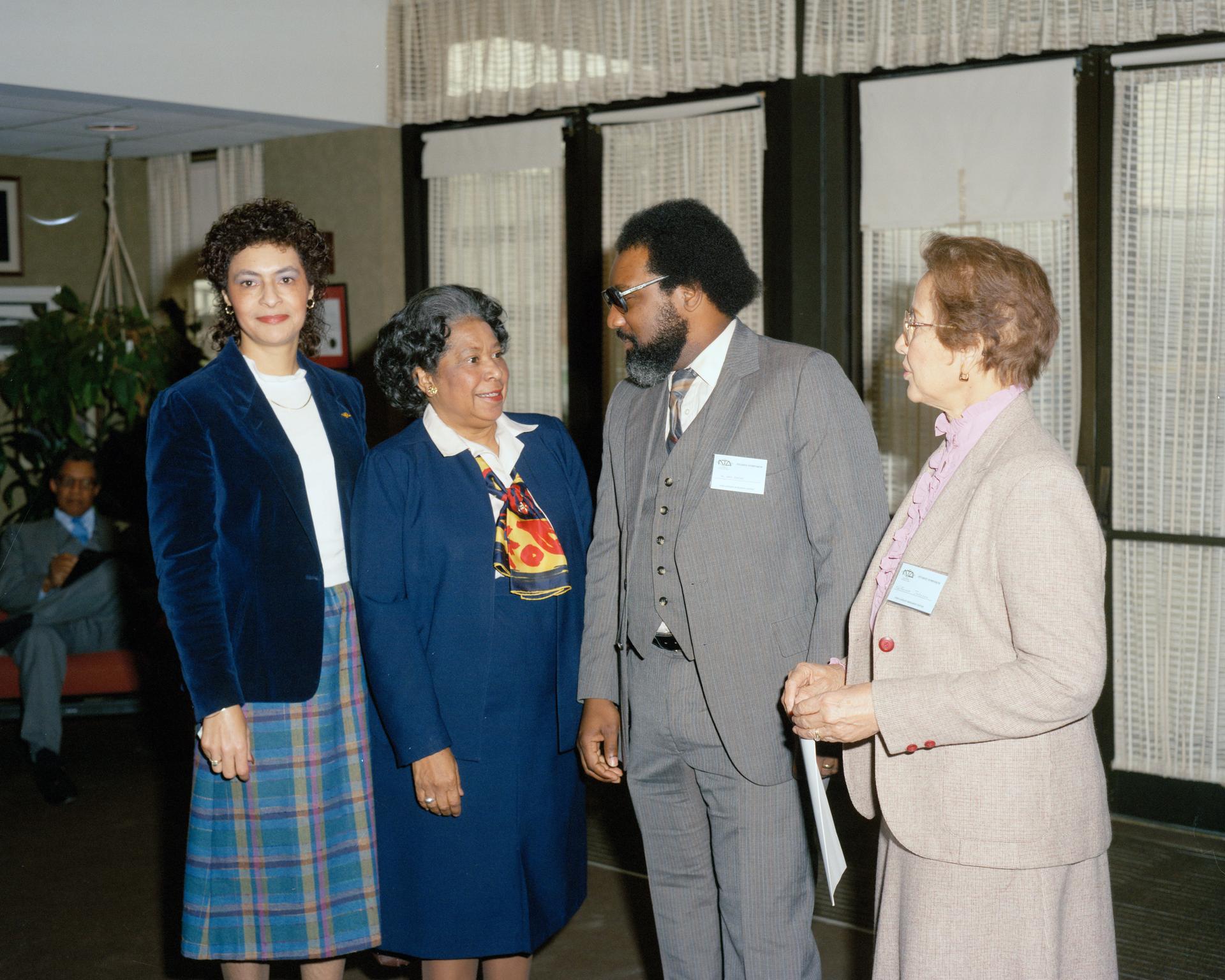
Left to right: Vivian Merritt, Mary Jackson, James Jennings, and Katherine Johnson, at a student symposium, 1984.
NASA

At the Katherine G. Johnson Computational Research Facility ribbon cutting ceremony, 2017.
NASA

A portrait of Katherine Johnson, 1980.
NASA
Rest in peace.
Unlike bacteria, diatoms are picky about microplastics
And that could affect how quickly different types of these tiny plastic particles are degraded
Kostas Tsobanoglou on Wikimedia Commons
Good news for fans of microplastics in the ocean! The tiny fragments of discarded plastic waste that find their way into marine environments are providing a long-term habitat for aquatic microorganisms.
While working as a doctoral student at the Smithsonian Tropical Research Institute at Arizona State University, Kassandra Dudek studied the phenomenon of microplastics serving as artificial microbial reefs. Bacteria are known to form biofilms along these materials, building up stable, complex communities. Dudek’s newly published research intended to find out whether certain types of bacteria have preference for settling on certain types of plastic. This could for example influence the movement of pathogens through the environment. It is also relevant because only certain types of bacteria are thought to be able to deconstruct (metabolize) certain types of plastic.

All of these plastic objects shed microscopic plastic particles into the environment as they break down
Photo by Jasmin Sessler on Unsplash
The study showed that the five types of plastic tested, all deriving from common household waste items, did not show any detectable differences in the types of bacteria found colonizing their surfaces. This suggests that it is the physical surface of plastic that quickly attracts bacterial settlers, rather than any chemical features of the specific plastics tested.
However, the researchers also noted that microscopic photosynthetic algae known as diatoms did show strong preferences for just 1 or 2 types of plastic polymer, and that diatoms needed to be exposed to plastic for a lot longer than bacteria in order to colonize the plastic surface. This is significant because earlier research showed that bacteria that could degrade plastic are often found associated with diatoms. It also shows the importance of long-term experiments, as these diatoms could not be detected on the plastic surface until after several weeks of exposure.
Scientists use GPS satellites to track Greenland ice sheet melting
Scientists could already measure soil moisture, wind velocities, snow depth with GPS satellites. Now they can also monitor melting ice.
By Fabrizio Verrecchia on Unsplash
The first GPS satellite was launched in 1978, and was built to aid navigation by transmitting radio signals from space to Earth. In 2000, President Bill Clinton removed the system’s military encryption. Called “selective availability,” this encryption had prevented users from calculating position coordinates in real time. Today, there are 31 GPS satellites operated by the US, plus more from other countries, all producing freely-available data.

Meet Dr. Gladys West, the hidden figure behind your phone’s GPS. She is one of the reasons why you can receive driving directions from your phone or tag a photo location on Instagram.
By US Air Force
In recent years, radio scientists have found a way to use the GPS constellation for purposes far beyond its intended use. The bounce-backs of GPS signals can be used to measure soil moisture, sea surface height, sea ice, wind velocities, and snow depth. After bouncing off of the Earth, the weak return signals are received by other satellites and contain information about the surface they hit. This process is called the Global Navigation Satellite System Reflectometry (GNSS-R).
Now, researchers have developed a new method to measure melting of the Greenland ice sheet using the GNSS-R.
Water reflects more microwave radiation than ice, causing stronger bounce-backs from melt regions. Researchers use this property to make maps of the reflectivity of the ice sheet during melt and non-melt seasons. Furthermore, the GPS signals can penetrate hundreds of feet into the ice, much deeper than existing measurements. As a result, the technique may be able to detect previously invisible subsurface melt, a new research area.
Spaceborne sensors are notorious for unplanned failures. The ability to make melt measurements from military-backed GPS satellites will provide a useful and more securely funded point of comparison for conventional measurements, potentially at greater subsurface depths than before.
Forest fires are good for bee populations
Scientists identified twice as many bees at burned sites compared to unburned sites
Yellowstone National Park on Flickr
Fire serves a vital role in our ecosystem. Forest managers often prescribe burns — also called a "controlled" burn — to mimic the natural fires in forests and grasslands that may stimulate germination, reveal minerals in the soil, and increase seed vitality. Prescribed burns are performed by highly-trained individuals to accelerate growth in the ecosystem. Certain tree species like lodgepole pine, ponderosa pine, and the famous sequoia actually require fire to open their pinecones and release their seeds.
But do these burns help pollinators? A recent study from researchers at North Carolina State University examined the impact of prescribed burns on the native bee community in the Sandhills area of North Carolina. Bees are important insect pollinators of grasslands that depend on natural fire for ecological production. But fire destroys and removes flowering plants visited by bees. So how could fire help bees?
The study involved taking diversity counts — that is, placing traps to catch bees and identifying them at the species level — at sites that had been burned within two years and sites that hadn't been burned.
The researchers found there were 2.3 times more bees captured in more recently burned forest sites than in the unburned sites.
Researchers found there were more flowering plants at recently burned sites, increasing the diversity of flowers known to benefit bees. Burns were conducted during the winter season, so as not to burn up woody debris that may serve as bee over-wintering habitat.
Forest ecosystems that require fire for growth are found across the country. Fire benefits forest and prairie ecosystems by stimulated tree growth and increasing the diversity and presence of native plants such as Echinacea, providing food sources for bee species. Prescribed burns are a powerful tool for land managers, and this study is one of a growing number aiming to show the benefits of prescribed burns for bees.
To find its last reservoirs, people with HIV donate their bodies immediately after death
A critical contribution to HIV research comes from them
Photo by Matheus Ferrero on Unsplash
Anyone can be a science hero. Often, when we think of a science hero, a researcher, educator, doctor, nurse, or engineer comes to mind. But science heroes are also the individuals who aren't acknowledged in author lists on breakthrough papers, and are rarely highlighted in the media. In fact, some of these science heroes are the very same people who participate in clinical trials, willing to sacrifice everything for science, even after science has appeared to fail them.
A new study in the Journal of Clinical Investigation describes six such science heroes, known as “The Last Gift” cohort. The goal of this study was to enhance our understanding of HIV reservoirs, which refers to deep tissues where HIV hides even during treatment and remission. Fluids, like blood, transport HIV, where it is easily studied, but little is known about HIV in stationary reservoirs like the kidney, liver, and spleen.
Understanding HIV dynamics, both where it travels and where it hides, is important in order to develop therapeutic approaches, but currently, the ability to investigate HIV reservoirs is only possible after death. By the time tissues are normally collected, the virus has generally degraded and further study is useless.
This cohort consisted of six individuals with HIV, who were also diagnosed with a terminal illness from a non-HIV condition, such as cancer. As part of the cohort, they consented to not only blood sampling during their life, but also donated their bodies for rapid autopsy immediately after death. In this study, researchers conducting autopsies found HIV in every one of the 28 reservoirs they tested. This means that in order to completely eliminate HIV, researchers will need to target all of its hideouts in order to eliminate the virus.
The Last Gift is an extremely appropriate way to refer to these science heroes. Even with the knowledge that they had a fatal disease and would be unable to experience a more effective HIV treatment, they donated their bodies to science so that others might be able to benefit. It’s important to thank the thousands of science heroes who have and will make similar sacrifices, like The Last Gift cohort.
Your clothes might soon contain tiny generators to charge your electronics
Never plug in your Fitbit or Apple Watch again
Imagine never having to charge your Fitbit or Apple Watch. How cool would that be? Except that it wouldn’t be, because the energy for charging your wearable device would come from your body heat (Ed: Ba-dum-tsh). This is exactly what a group of researchers from Northwestern University and Donghua University in China have achieved by creating the first ever working, wearable thermoelectric generators (TEGs). They recently published their findings in the journal Nature Communications.
Research on wearable TEGs has been underway for about a decade, although existing prototypes need to be perfected for practical use. Fundamentally, TEGs are made up of a conducting polymer, such as carbon nanotubes, and are able to convert absorbed heat into electric energy which then fuels battery power. But the currently available designs are too bulky to be integrated into fabric.
The scientists behind this new breakthrough generated TEG models using a special type of carbon nanotube fibers that's as thin and flexible as thread and could be woven into a fabric. Their TEGs have amazing stretch capabilities, capturing adequate thermal energy because they are aligned with the direction of heat flow from the body to the device. Lastly, their new TEG was able to transform this heat into battery power efficiently without being hampered by bodily movements. It showed a power density of 70 milliwatts per square meter for a 44 Kelvin temperature difference, one of the highest power outputs reported yet.
Tapping on keys, achieving steps and exercise goals all cause an increase in body heat. That day isn’t far when, the more we use our devices the more charged they will be. Until then, don’t forget your charging cords!
Mars is hiding behind the Moon this morning
It's a twice-a-year occultation; like the eclipse, but it's Mars, and there's no shadow
NASA/JPL/USGS
Occlusions are any kind of blocking off. If I step in front of you in line at the coffee shop, I have occluded you and also been a jerk. Go ahead, kick me in the shin.
This morning, the Moon is stepping in front of Mars. This occlusion, Mars-and-the-Moon, occurs twice a year. It's kind of like an eclipse, but an eclipse is a specific kind of occlusion where a shadow is cast. But here there's no shadow. Just Mars briefly hidden behind the Moon's back.
You'll be in the best position to see the end of the occlusion in the Pacific time zone. With a clear low view in the southeast, you'll see Mars pop back out from behind the Moon's back.
Enjoy the trip Mars.
Think mosquitoes only drink blood? Think again.
Mosquitoes also drink nectar, serving as pollinators for certain types of orchids
Abhishek Mishra via Wikimedia Commons
When we think of mosquitoes, we usually think of itchy bites and diseases like malaria or Zika. While they do feed on human and animal blood, mosquitoes are much like many other insects — they also use the sugar in nectar for energy for reproduction, movement, and survival.
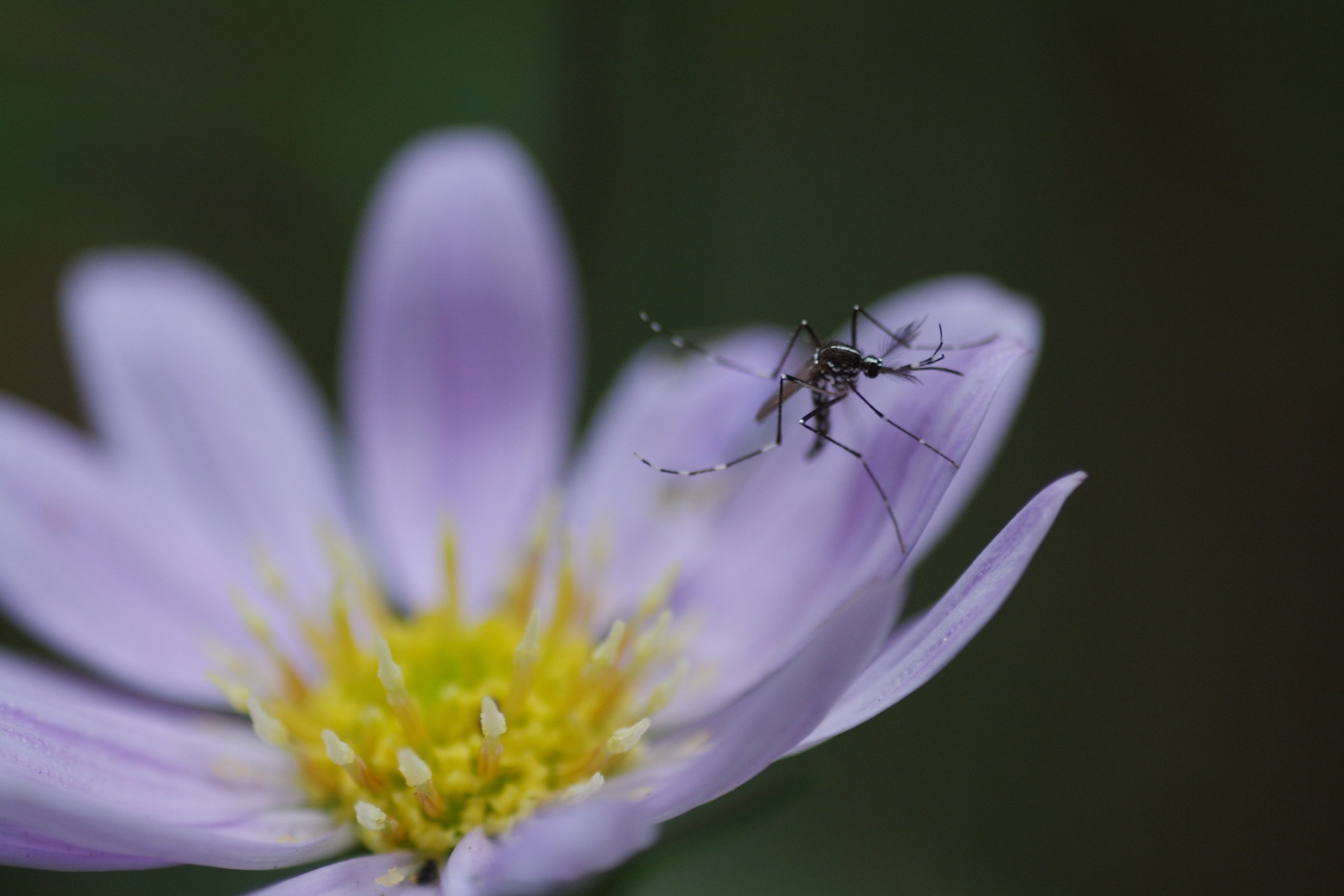
k yamada via Flickr
A study by researchers at the University of Washington has identified the floral cues — or unique scents that attract different pollinator species — that influence mosquito visitation to a flower. The lab found that a specific scent produced by Platanthera obtusata, the blunt-leaved bog orchid, attracts the Aedes mosquito. Scientists observed the feeding behavior of mosquitoes on orchid flowers, and analyzed the compounds of the orchid's scent using mass spectrometry — a process which can identify chemical compounds based on the molecule's mass and chemical structure.
Mosquitoes feed on a wide variety of flowering plants, and in some cases even perform pollination while in search of nectar sources in the depths of flowers for sugar feeding.
The Platanthera orchids produced a distinct pattern of specific compounds, which are recognized and used by mosquitoes to distinguish between Platanthera and other species of orchids. The scent profile of Platanthera orchids and other mosquito-pollinated flowers were similar, taking science a step toward understanding why mosquitoes are more likely to pollinate one species over another.
By understanding the olfactory cues used by insects like mosquitoes, researchers can better understand the impact that smell has on the allure of mosquito prey, such as humans. Manipulation of mosquito senses serves a large role in mosquito bite prevention, and will play an important role in our future goal to eradicate mosquito-borne diseases.
Iron concentrations in teenagers' brains can be linked to their cognitive abilities
Also, women reach peak iron concentration in their brains earlier than men
Photo by Scott Webb on Unsplash
You might have heard of iron deficiency anemia. Iron is the central element in hemoglobin, the oxygen-carrying protein of our blood. Having low concentrations of iron can lead to not having a proper circulation of oxygen, which usually translates to feeling tired or weak. However, there is also iron stored in tissues, including the brain. There, it helps with the cell’s production of energy, with the formation of myelin (i.e. white matter), and it is used by different enzymes that produce neurotransmitters.
Much like everything brain-related, the concentration of tissue iron in the central nervous system needs to stay in a perfect balance. Too much iron might lead to an increased chance of neurodegeneration, too little iron might cause irreversible changes in brain chemistry. But what was previously unknown was whether teenagers were particularly susceptible to iron deficiency, as much as babies and children can be. A group of scientists from the University of Pennsylvania has now shown that there is a correlation between brain tissue iron during adolescence with cognitive abilities.
Bart Larsen and their colleagues analyzed brain scans of 922 humans (8-26 years old). Using a technique called R2* relaxometry, they were able to quantify the concentration of iron in the brain by magnetic resonance. This concentration, especially in a brain region called basal ganglia increased over time in all samples. However, there were some observed sex differences, with women's brains reaching a peak of iron concentration earlier. By doing a battery of neurocognitive tests, the researchers found that there was a correlation between how much iron was being accumulated over time with a person's cognitive performance.
Although only a correlation, studies like this are important in finding how different external factors affect our development. Worth pointing out: iron deficiency is still a problem in the US affecting 15% of women and 3% of men. With this new study, we are more aware of the importance of iron in the normal brain development of teenagers.
On #WorldPangolinDay, we celebrate this roly-poly scaly anteater, one of the world's most trafficked mammals
But celebrations are marred by the recent suggestion that pangolins may be the SARS-CoV-2 carrier
By Shukran888 on Wikipedia
Today is the World Pangolin Day. This day is celebrated each year, on the third Saturday of February, to raise awareness about pangolins. But this year, the ninth World Pangolin Day might have a different focus, given that a link has recently been suggested between pangolins and the severe acute respiratory syndrome coronavirus 2 (SARS-CoV-2), which originated in Wuhan, China. However, we cannot blame the spread of this coronavirus on the pangolin, even if they do turn out to be the carriers.
Pangolins are mammals ranging in size from about a foot to over three feet. There are eight species of pangolin in the world, all covered in scales made of keratin, the protein that also makes up our hair and nails. They eat insects, including ants and termites, which has earned them the name scaly anteater.
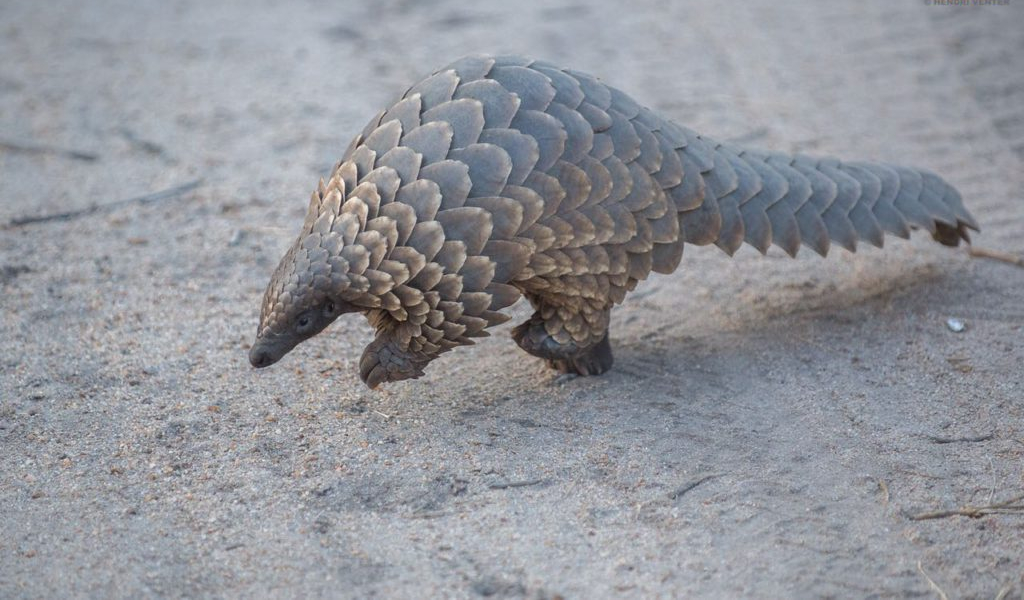
Sadly, pangolins face the risk of extinction in the wild, mainly caused by humans trafficking pangolins for their meat and their scales. In fact, they are among the most trafficked wild mammals in the world.
If pangolins do carry the SARS-CoV-2, which has not yet been conclusively proven, the spread was likely only possible due to this trafficking. Generally speaking, pangolins like to keep to themselves and are mostly nocturnal, so they do not often come into contact with humans naturally, unless we go out looking for them.
“I think that given the difficulty in monitoring the populations of all pangolin species, it is difficult to ascertain how well they are doing,” says Daniel Ingram, a researcher from the University of Stirling. The different species have different lifestyles — some live in trees, while others are ground-dwelling — which means that scientists need to develop different methods to monitor them.
“Understanding the behaviour of wild pangolins better could play a role in pangolin conservation, as it could help improve monitoring methods and help us understand how pangolins respond to human disturbances,” says Ingram.
And it seems like this is even more important if pangolins do turn out to be the SARS-CoV-2 carrier.
Scientists analyze centuries-old DNA to investigate French revolutionary's mysterious skin condition
Was scabies, syphilis or atopic eczema the reason why Jean-Paul Marat was in the bath when he was assassinated?
By Jacques-Louis Davidhttps://en.wikipedia.org/wiki/en:Jacques-Louis_Davidon Wikimedia Commonshttps://commons.wikimedia.org/w/index.php?curid=313451
Jean-Paul Marat (1743-1793) was a French journalist, politician, physician, and scientist during the French Revolution, who was assassinated while taking a medicinal bath for his worsening skin condition. While the manner of Marat's death is obvious, the cause of his worsening health in his final years has remained a mystery, with doctors hypothesizing that conditions such as scabies, syphilis or atopic eczema may have been to blame. Now, scientists have analyzed DNA from his blood stains to shed some light on this issue.
During his life, Marat was a French revolutionary who advocated for the rights of the sans-culottes (the poorest members of society), but also served as a court doctor, published findings on fire, electricity, and light, and wrote a regular periodical, titled L'Ami du peuple (The Friend of the People). At the time of his assassination, Marat was annotating two L'Ami du peuple issues in his bath. These blood-stained issues (made of old cellulose paper) were later donated to the Département des Estampes, Bibliothèque National de France, offering a rare opportunity for scientists to use DNA sequencing to posthumously diagnose infections in a historical figure.

La Mort de Marat (Death of Marat) by Jacques-Louis David
In this study, Toni de-Dois and their fellow researchers took two non-destructive forensic swabs — one of a blood stain, and a second from an area of L'Ami du peuple with no blood stains for comparison. Following DNA extraction and sequencing, the researchers compared the two swab samples to account for any contamination that may have occurred in the last 200 years or so, before carrying out a number of analyses to better understand Marat's health at the time of his death.
Instead, researchers found DNA fragments matching Malassezia restricta, which is a fungal pathogen that causes seborrheic dermatitis (a chronic form of eczema). They also noted the presence of DNA fragments matching Cutibacterium acnes (although common, it is linked to acne) and Staphylococcus aureus (often detected in atopic dermatitis, though found in low quantities in Marat).
So what does this all mean?
Although de-Dois and their fellow researchers were unable to reach a specific diagnosis, they do provide evidence that Marat was suffering from an advanced fungal infection, likely seborrheic dermatitis, with additional bacterial infections. This study also happens to be one of the first to leverage DNA sequencing technology to diagnose infections in historical figures.
To find the exact answer to the mystery Marat's worsening health, researchers will need to analyze more of the DNA found on Marat's preserved possessions — with the potential to apply this analysis to additional historical figures.
Buy your scientist Valentine books from our reading list
Our writers' recommendations for books about health, including pain, teeth, sex, and mental health
We asked consortium members what they are reading, and wow, they really came through! Here are a few of the health-related books they recommend. Just so you know, Massive may collect a percentage of sales from the links on this page.
The Mystery of the Exploding Teeth: And Other Curiosities from the History of Medicine, by Thomas Moore
Buy the book: Amazon, Independent Bookstores
I think it goes without saying that I was drawn to the book because of the title. The book does a great job of explaining medical mishaps in an accessible and fun, but respectful, way. I can’t help but draw parallels between some of the historically-used remedies (e.g., wine enemas) and what some people do now (e.g., coffee enemas) - Monica Javidnia
The Collected Schizophrenias by Esmé Weijun Wang
Buy the book: Independent Bookstores, Amazon
In her essay collection, Esmé Wang describes her journey being diagnosed with bipolar disorder and subsequently after with schizoaffective disorder. I really enjoyed that the essays explored different aspects of the disease that I was unaware of such as involuntary hospitalization, mental illness stigma, and the history of the disease itself. While I was reading the essays, it became apparent how courageous the author is to share her life experiences and I think these essays will shed light on the disease and the stigma that surrounds it. - Felicia Davatolhagh
Doing Harm: The Truth About How Bad Medicine and Lazy Science Leave Women Dismissed, Misdiagnosed, and Sick by Maya Dusenbery
Buy the book: Amazon, Independent Bookstores
Inspired by her own difficult experience with getting a diagnosis of rheumatoid arthritis, Dusenbery presents a really compelling look at gender bias in medicine that left me frustrated with the status quo. She covers the origins and outcomes of this bias, including historical medical practices (ugh, “hysteria”), basic biomedical research, the inclusion (well, lack of) women and minority communities in clinical trials, and interactions with clinicians. I hope this inspires people in the biomedical community to do better. - Rachel Stewart
Books about science and sex
I'm currently reading Bonk: The Curious Coupling Of Science And Sex by Mary Roach, after I have read The Technology of Orgasm: “Hysteria,” the Vibrator, and Women’s Sexual Satisfaction by Rachel Maines. I am thinking of writing a book review on these two books! - Crystal Chan
The science behind Nike's Vaporfly shoes
World Athletics has put limits on the types of shoes that marathoners can wear to prevent sponsored athletes from having unfair advantages
On January 31st, World Athletics released new technical rules officially qualifying what a 'legal' running shoe is. A host of brands, led by Nike with its Vaporfly series, have forced the hand of the regulatory agency by developing shoes containing new types of lightweight foam and shock-absorbing carbon plates that function like springs. These types of shoes have been proven in studies to improve running economy over conventional marathon racing shoes.
Because Nike has led the development of these shoes, their sponsored runners have enjoyed a relative advantage over their competitors dating back to the 2016 Olympic Trials, where 4th place finisher (Sketchers-sponsored) Kara Goucher compared the Vaporfly shoes to a doping advantage. Distance-running scientists weighed in on the resulting kerfuffle, proposing limits on sole height to future-proof the stacking of carbon plates resulting in bigger and bigger springs.
It appears that World Athletics agrees: they've ruled that no more prototypes are allowed in competition; shoes must have a maximum sole height of 40 millimeters; and they may have no more than a single carbon plate. Those rules allow runners to wear Nike's popular Vaporfly 4% and Next% (pictured) shoes, but it appeared they would ban their Alphafly shoe, last year's prototype worn by both Eliud Kipchoge (1:59:40) and Brigid Kosgei (2:14:04) when they shattered record marathon times in Vienna and Chicago. However, upon official measurement the Alphafly just barely cleared the height limitation at 39.5 millimeters.
Shoe brands will continue to innovate with new materials and designs, but whether they manufacture exclusively within those limits from a commercial aspect remains to be seen: is there a market for shoes that may not be competition-legal, but that could allow amateur athletes to reach the performance levels of more gifted athletes? That is a question that science cannot answer.
You can mimic the physics happening on the surface of the Sun in your kitchen
As the plasma on the Sun's surface heats and cools, it forms cells the size of Texas
The images of the Sun recently obtained by the Daniel K. Inouye Telescope are stunning, but you don’t need a 4.24-meter telescope to see the physics first-hand.
Plasma heats within the Sun, becomes less dense, then rises to the Sun's surface. Once there, it cools, gets dense, and sinks again. The gorgeous “caramel popcorn” appearance is a result of the plasma becoming ordered into cells the size of Texas. The edges of these cells are defined by dark lines of sinking plasma. This is described by Rayleigh-Benard convection, which tells how the size of these regions depend on the properties like the temperature, density, and viscosity of the plasma, and how heat transfers through it.
The same sort of convection that happens in your kitchen. You can observe this effect by mixing food coloring and dish soap, then placing it in a pan on the stove. Of course, your convection cells will be a bit smaller than those on the surface of the Sun!
Coffee baristas were right all along — grinding coffee finer doesn't always produce a stronger cup of espresso coffee
Scientists use mathematical modelling and experiments to prep the perfect cup of espresso
Photo by Joshua Rodriguez on Unsplash
New research on the physics of espresso has generated a caffeine buzz in the news, but as a hipster, physicist, and a coffee snob, I feel obligated to contextualize these results.
As my fellow coffee lovers may know, espresso is made by forcing water through a bed of coffee particles, which extracts chemicals like caffeine and sugars. Smaller particles and higher pressures usually mean higher extraction and stronger cups, but experienced baristas know that grinding coffee finer doesn’t always produce a stronger cup. Baristas have proposed empirical solutions, but only now have scientists, in collaboration with the coffee community, succeeded in quantifying this effect.
With a mathematical model backed by experiments, researchers finally confirmed the theory that baristas have held for years; that high pressure (often achieved by adding more or finer grounds) and irregular particle size can cause flow channels to form, resulting in uneven wetting of the coffee, and ultimately making a weaker, less tasty brew.
Researchers hope this model helps make coffee more delicious with less waste — and the success of this work demonstrates the importance for clear science communication as fruitful collaborations can often be found outside academia.
Wasps are parasitizing caterpillars less often under climate change
Changing interactions could lead to a decline in important ecosystem services like pest control
gailhampshire via Flickr
Assessing the impacts of climate change is essential for scientists who want to understand ecosystem dynamics. However, until recently, relatively few studies have linked climate variability to species interactions.
Researchers used data from 22 years of sampling at the La Selva Biological Research Station in Costa Rica to generate statistical models that measure changes in insect species diversity and richness and make future predictions. (Richness is a measurement of how many species are in a given area; diversity takes into account how many species there are as well as the number of individuals of each species.) Researchers looked at two types of insects: caterpillars and parasitoids. Parasitoids are a type of insect whose larvae live as parasites (usually in other insects) that eventually kill their hosts. These types of insects offer an important ecosystem service through species interactions by preventing outbreaks of herbivorous insects (like caterpillars) that can damage wild plant populations or crops in areas of agriculture.
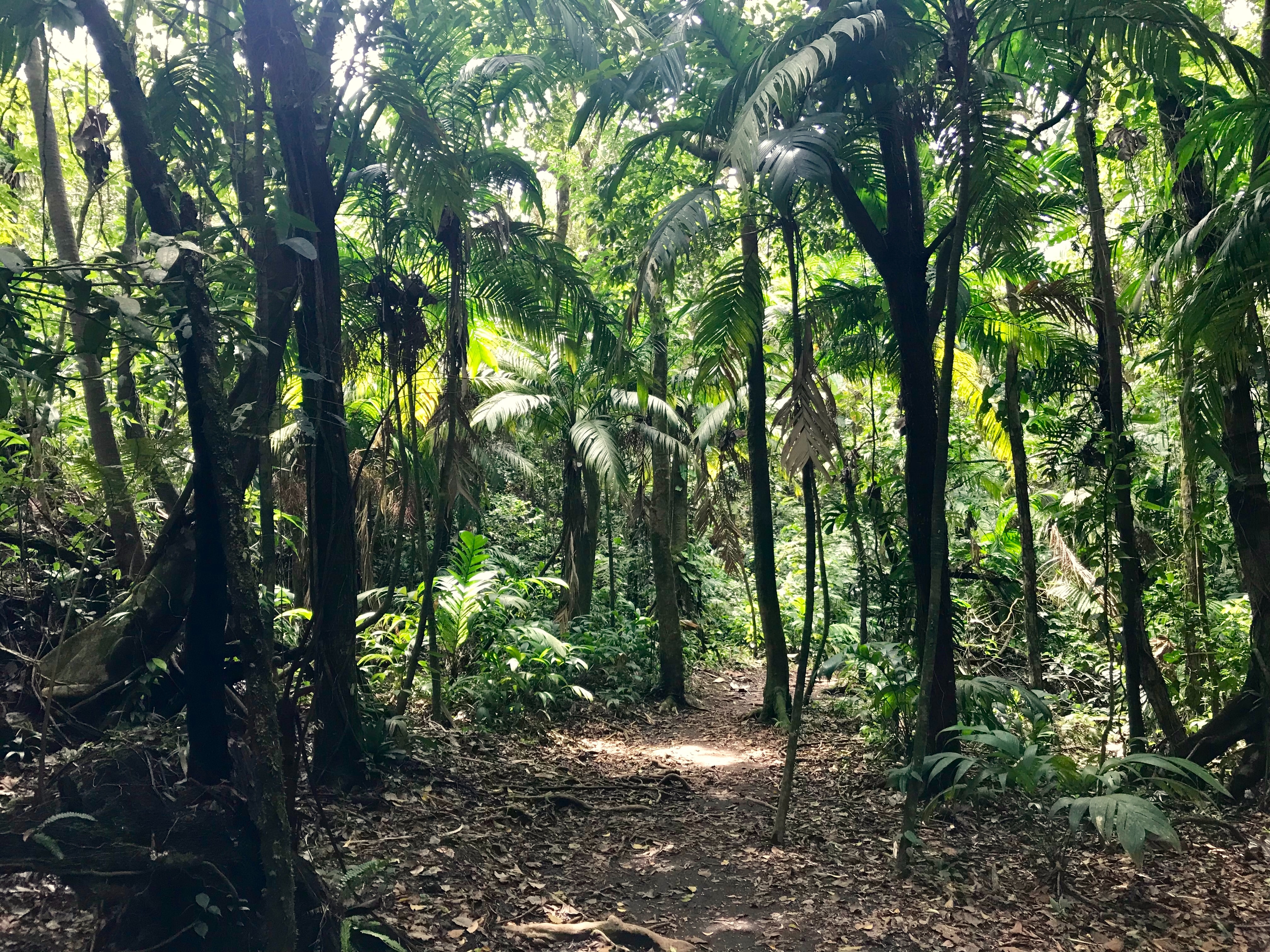
Photo by Tommy Krombacher on Unsplash
The researchers found that species richness and diversity has declined in both caterpillars and parasitoids. Results suggest that these declines are partly driven by climate change and weather anomalies such as extreme precipitation and episodes of warmer than average temperatures, which have been occurring at an increasing rate at La Selva. Alongside the decreases in diversity and species richness, there has been a decrease in the interaction richness between caterpillars and parasitoids. A reduction in parasitism means that there is less biological control over herbivorous caterpillar outbreaks, which decreases ecosystem stability. By extrapolating the data for the next 100 years, this study predicts there will be a 30% drop in parasitism (compared to the 6.6% drop seen over the 22 year study period). These findings support the hypothesis that climate change is contributing to insect species declines. Further research is needed to explore the impacts of declining species interactions.
Children with musical education gain greater self-control
Ability to delay gratification may help explain the benefits of musical training
Playing a musical instrument requires a battery of unique skills, including being able to quickly and accurately assess incoming sounds, fine motor skills, and the coordination of behavior and feedback from one’s errors and mistakes. Receiving musical education at a young age has been shown to increase spatial-temporal skills. Musicians must often inhibit attention from one hand to focus on the movement of the other; this is called inhibitory control.
Inhibitory control is not a new idea; in fact, this concept is taught in most Psychology 101 lectures, using an example called the marshmallow test. In this famous experiment, an experimenter would place a marshmallow in front of a child and tell her to wait 15 minutes during the experimenter’s absence. The child was promised a second marshmallow if she had the willpower to wait. Those who waited and chose the delayed gratification tended to have better academic performance as adolescents.

Photo by Marius Masalar on Unsplash
A recent longitudinal study brings new light to this old topic. The results revealed children in their third year of musical training chose delayed gratification significantly more often than children in sports programs or those not participating in extracurricular activities. A previous study from the same research group showed that music students also had differences in brain activation (measured with fMRI) compared to students who were not involved in music or sports. During tasks that required cognitive control, the music students had increased activation of the inferior frontal gyrus (attentional demand and inhibition), anterior cingulate cortex (emotional control), and insula (self-awareness).
The mice most scientists use to study Alzheimer's aren't accurate
A new Nature study shows that human and mouse brains with Alzheimer’s disease look and function differently
Image by Tibor Janosi Mozes from Pixabay
Scientists often conduct the first stage of drug trials in mouse models, including mice genetically engineered to develop Alzheimer’s disease. However, the accuracy of mice as a representation of human biology is being challenged daily, including by the authors of this Nature Medicine study in early January 2020.
Led by medical researchers at Washington University in St. Louis, the study shows that the most common Alzheimer’s disease (AD) mouse model, 5XFAD, has an entirely different genetic response to one of AD’s pathological hallmarks – amyloid-beta. In AD, specific neuron proteins are broken into two fragments, called amyloid-beta 40 and 42. These fragments clump together into non-functional masses – the protein version of tumor cells – that form even larger plaques that destroy neuron connections and inhibit brain function.
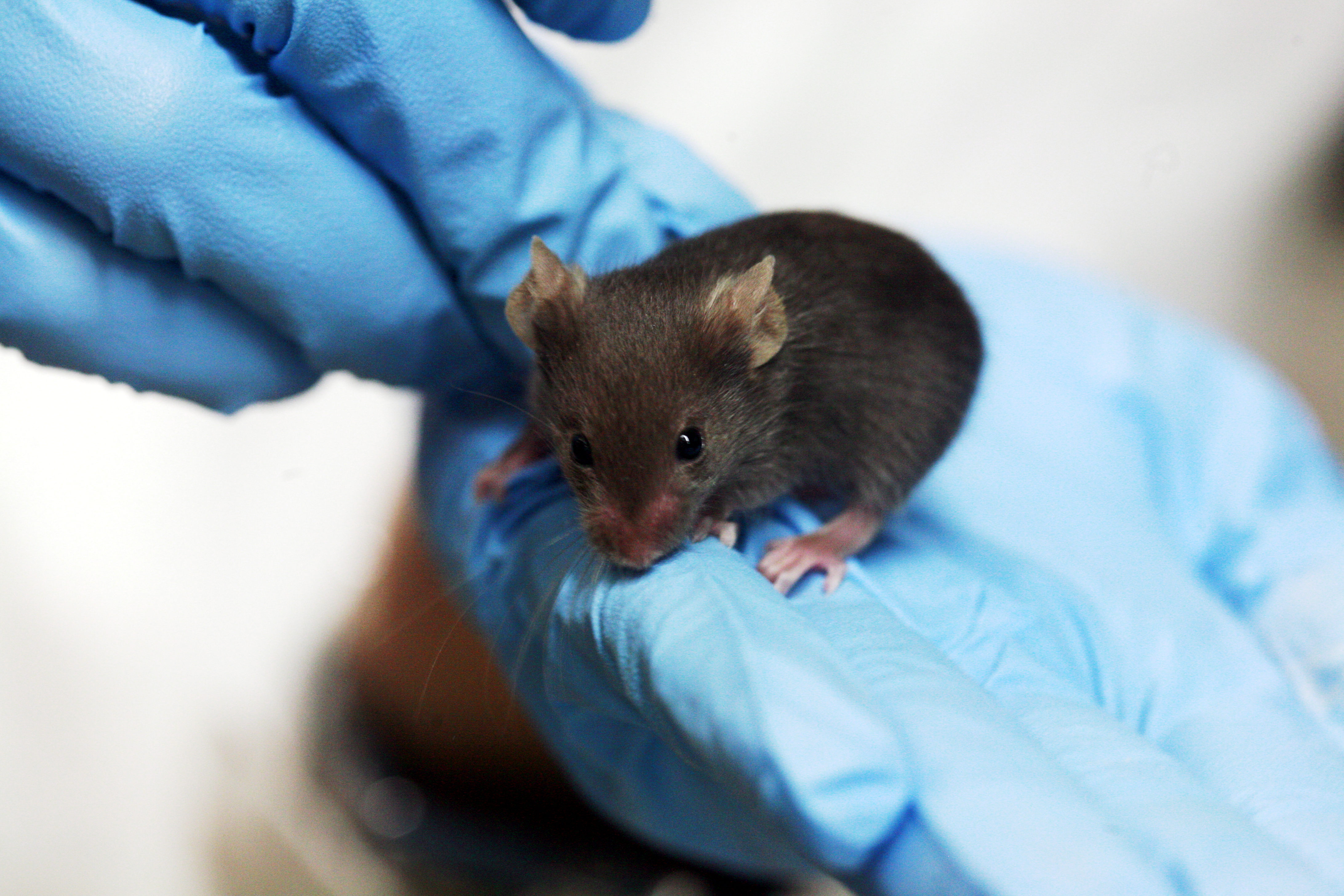
This Nature study adds one more sticking point for why mouse studies are not sufficient to investigate Alzheimer’s disease.
Rama on Wikimedia Commons
However, when analyzing brain cells, like microglia and astrocytes, the mouse cells had entirely different genetic responses to amyloid-b than human cells. Certain genes and proteins were under-expressed in AD-mice microglia and over-expressed in AD-human microglia, compared to normal brains. In addition, astrocyte cell differentiation was only mildly affected by AD in mice, but severely mutated in AD-human brains, leading to the formation of 6 different types of impaired astrocytes.
The study is one of many contributing to the growing discussion of how accurate Alzheimer’s disease mouse models are and why, if they do not closely match to the human AD disease state, we should continue using them.
"Insect destroyer" fungus uses tiny, squishy cannons to fire spores
Scientists are studying this fungus for use as a more environmentally-friendly insecticide
Photo by Krzysztof Niewolny on Unsplash
You may have heard of “zombie ants” — insects that are infected with a fungal pathogen that can control their behavior, coercing them into climbing to a high location to better spread fungal spores before meeting their end. But did you know that another species of pathogenic fungus, Entomophthora muscae or “insect destroyer,” could be harnessed by humans to act as a more environmentally friendly insecticide? Although we’ve known for decades that the insect destroyer fungus can infect flies, including the common housefly, we lacked the laboratory tools necessary to actually study the fungus-fly interaction in much detail.
.jpg)
An infected insect.
Researchers at the University of California, Berkeley have identified a particular variety of this fungus that can infect the commonly-used fruit fly model organism, Drosophila melanogaster. This means that all of the tools we’ve accrued over the last century to study D. melanogaster in the lab can now be applied to its interaction with the fungus, making it much easier to learn how pathogens like the insect destroyer infect their host and control their behavior.
Scientists are also investigating the fungus itself, especially the ways that the fungus spreads its spores, which is a key part of how the fungus is able to infect new victims. Scientists found that E. muscae spores are shot out from cannon-like structures on the dead, infected flies at roughly 10m/s or 22mph — very fast in the world of fungal spores. This even inspired a follow-up study by biophysicists in Denmark that specifically examined the physics of spore ejection. The scientists created tiny, squishy cannons made of silicone that they could load with 3D-printed projectiles and fire with pressurized liquid, mimicking the actual ejection system used by the insect destroyer fungus. It turns out there’s a very specific canon and spore size that maximizes ejection speed and distance, increasing the chances of further fly infection.
Coronavirus update: widespread diagnostic testing, bioRxiv, and two public health futures
Feb. 5th: 28 countries have confirmed cases
Photo by Dimitri Karastelev on Unsplash
The outbreak of a new coronavirus is a global public health emergency that has spread to at least 28 countries so far. There's a lot of news and it can be hard to make heads or tails of it all. It's a little overwhelming. Here are a few key updates that we think you should know about.
A diagnostic test has been authorized for use at public health labs across the U.S.
Until now, samples from suspected cases of the new coronavirus — dubbed "2019-nCoV acute respiratory disease” (where "n" stands for "novel" and "CoV" for "coronavirus") — had to be shipped to Centers for Disease Control and Prevention (CDC) labs. In an announcement on Tuesday, the Food and Drug Administration issued an emergency use authorization to fast-track the diagnostic test and permit its use at any CDC-qualified public health laboratory. The test itself converts specific regions of coronavirus's RNA genome into DNA, makes many copies of it using a process called amplification, and then tests it for the presence of these amplified bits with a glowing dye. Scientists hope that the availability of the test will prevent backlogs and enable the preventative measures that come with a real-time diagnosis.
Preprint repositories are spreading information, and misinformation
Preprint servers like bioRxiv have allowed scientists to share their research faster than ever before by giving papers a place to be read and shared before the peer review process. For perhaps the first time, we are now seeing how these repositories are helping and hurting in a public health response. Data sharing, through for forums like virological.org and the GISAID Initiative, have allowed researchers to sequence and start analyzing the coronavirus at unprecedented speed. At the same time, some scientists worry that publishing (and publicizing) before peer review is placing quantity over quality in this outbreak.
One preprint has already been withdrawn following widespread criticism, and bioRxiv has put up a banner on top of every page, cautioning viewers that the research posted there has not gone through peer review.
Two futures for 2019-nCoV
In one of my epidemiology classes this week, we split up into groups and underwent a coronavirus-themed crisis management case study. This is obviously just a simulation, but by day 21, the virus was everywhere and we had to transition from containment to mitigation.
I was struck by a recent article in STAT, which lays out two scenarios of what a future with endemic 2019-nCoV might look like:
One possibility adds this virus to the already four endemic human coronaviruses, which cause common cold and are a lower concern than something like the seasonal flu. Another possibility is a seasonal cycle in which coronavirus transmission dips during summer months due to their intolerance of higher heats and humidity.
We’ll keep checking in with these short roundups, so stay tuned.
Yeah, one fish, two fish, but can fish actually count?
Studying zebrafish could help us unravel the neural circuitry underlying numerical skills
Photo by Lynn Ketchum, courtesy of Oregon State University via Flickr
Understanding and using quantitative information is important for animals to compete for resources, protect themselves from predators, get access to territories and for reproductive benefits. Certain species also exhibit an awareness of numerosity, or being able to differentiate between groups of varying numbers, at fine scales. While humans rely on a symbolic sense of numerosity (we have symbols and names for counts), animals depend on non-symbolic representations of numbers. Although they use this information for their survival, does this mean they are really counting?
Researchers from the lab of Giorgio Vallortigara have shown that zebrafish do in fact use ordinal counting in order to get to a “reward." Ordinal counting keeps track of a position (as in, the second door out of seven), as opposed to cardinal counting, which tracks an amount ("there are seven doors"). Zebrafish were trained to exit an arena with seven identical exits in a corridor, using only the second exit. This was done by blocking the other exits with a clear sheet of plastic. On the other side of the corridor was a reward of food and other fish. If the fish swam towards other exits, they did not receive any reward. But what happens when all doors are up for ‘swims’?
Post training, the fish were tested by decreasing the length of the corridor, decreasing the distance between exits, or increasing the number of exits. In the first two experiments, they chose the second exit with a frequency greater than random chance, indicating that they were in fact “counting” to choose which exit to use.
In the last experiment, along with choosing the second exit significantly more than the others, they also chose the second-to-last exit (second from the other end of the corridor) more than chance level. The higher numbers seemed to "confuse" the fish. In such contexts, the fish switched to using spatial feedback, along with ordinal information, to increase their chances of getting lunch with their pals.
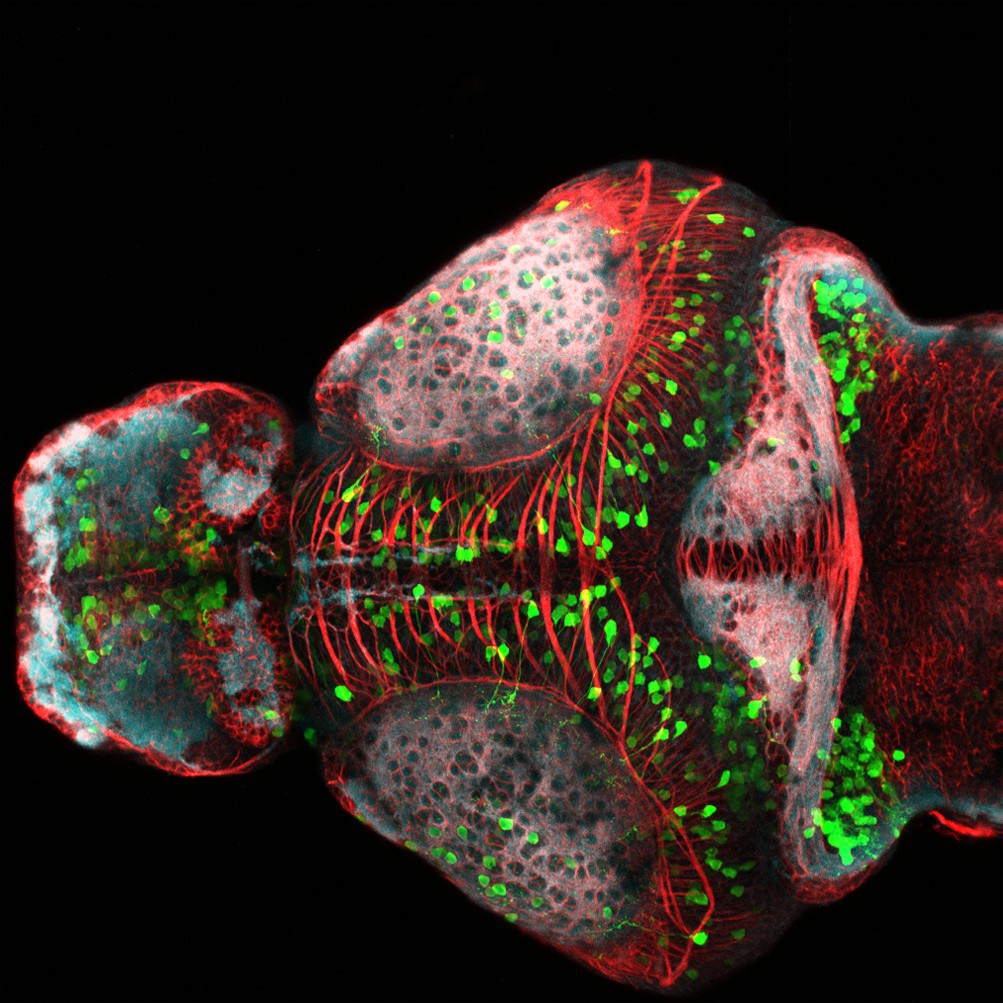
Confocal micrograph of the developing zebrafish brain
Although evidence of numerical skills has been reported in birds, amphibians, mammals and even insects, studying it in a well-established model system like zebrafish opens up avenues to decode the mechanisms underlying this behaviour.



















